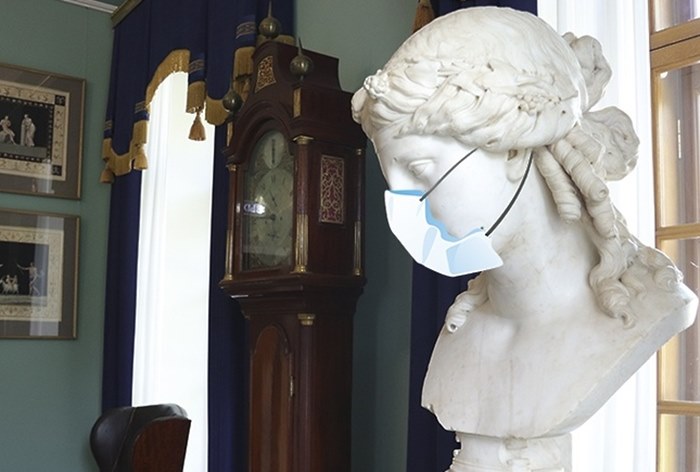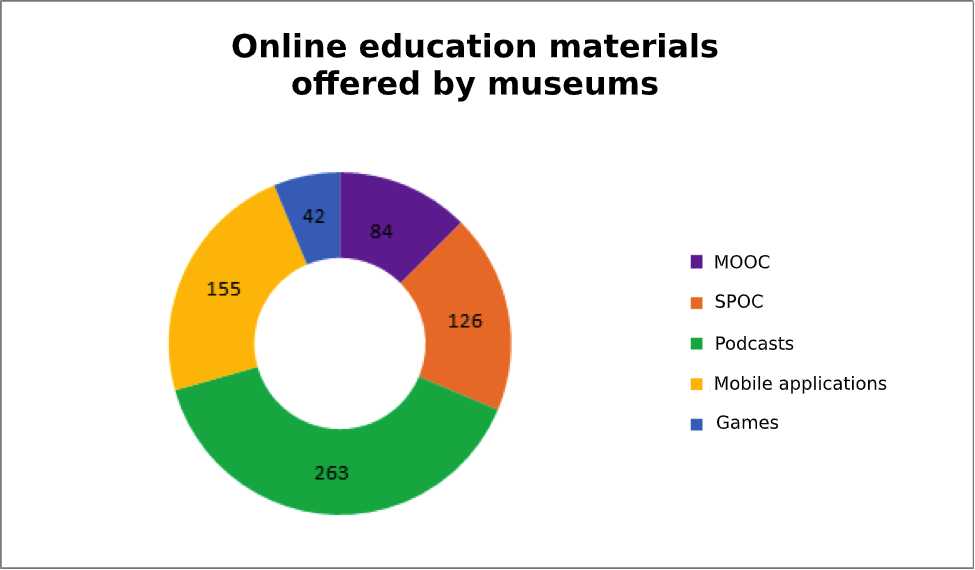Museums Learn to Cope with Quarantine
Approximately six months before the introduction of restrictive measures, the Laboratory of Cultural Economics at the St. Petersburg campus of HSE began a study of how Russian and foreign museums conduct their online educational activities. The researchers released their initial findings in late January 2020, having managed to “take the temperature” of this market before the pandemic hit. Professor Valery Gordin and Research Associate Irina Sizova explain what it was like before the coronavirus crisis and how it will look afterwards.

Valery Gordin,
Doctor of Sciences in Economics
and National Economy Management,
Professor, Head of the Laboratory
of Cultural Economics,
HSE, St. Petersburg
Irina Sizova,
Candidate of Historical Sciences,
Research Associate
Laboratory of Cultural Economics,
HSE, St. Petersburg
The online education offered by modern museums combines two paradigms — curriculums developed since the late 19th century aimed at schoolchildren and adults who have a strong interest in art and a huge system of online courses developed by universities.
Our research analyzed all the main online platforms and websites of the world’s leading museums and international museum associations. This ‘catch’ consists of 670 different online products developed by 280 museums. The sample includes only educational resources with audio-visual and text-based learning materials as well as optional guidelines, syllabi, tests and course certificates.
A Course about Courses
Our primary finding was that museums rarely develop ‘classic’ massive open online courses (MOOC) for their respective platforms. These totalled only 84. Small private online courses (SPOC), however, were somewhat more common, at 126.
Large-scale online platforms such as Coursera and Stepik offer MOOC lessons, whereas SPOC offerings involve a teacher who constantly interacts with a small study group.
The Museum of Modern Art (MoMA) created the first-ever museum MOOC in 2013 using the Coursera platform. Several years later, universities came on board and created MOOC based on the museums’ collections and aimed primarily at their students. Now, MoMA offers 16 courses, nine of them on Coursera.
The Schools of Museum Studies at the University of Leicester and the National Museum of Liverpool have developed a course called Behind the Scenes at the 21st Century Museum aimed at everyone interested in how museums work. In our opinion, however, it works better as a continuing education course for museum employees and for teaching museum studies to students.
The number of available courses is much smaller in Russia. One noteworthy offering is Expo Design: Designing a Museum Exhibition in the Dialogues of a Designer and Museologist. Created by Tomsk State University staff for current and future museum specialists, it is devoted to museum design and exhibition work.
Play and Listen
More than anything else, museums recorded podcasts with educational content — 263 titles — and created mobile applications — 155 in all. Although fewer in number — just 42 — museums also created educational games.
The most interesting include professional games aimed at training museum employees. For example, ‘Museum Professional’ by the State Tretyakov Gallery explains the ins and outs of working in the museum’s various departments — from accounting and curating to exhibition. Another example, ‘The Museum from Inside’ game by the Anna Akhmatova Museum in the Fountain House in St. Petersburg explains the curating department of the memorial museum.
The Mondo Museum game also deserves special mention for enabling users to design their own museums from scratch. This project combines the economic strategy genre with a simulation of real museum life.

Clearly then, museums have a much broader range of online educational tools than what is available within the framework of university and postgraduate education. Museums now offer a whole system of full-fledged online courses for a variety of platforms as well as numerous other online educational products. The latter is used as either an independent element of continuing education or else serve as 'building blocks' of MOOC and SPOC. As a result, museums had already become prominent 'players’ in the online education market even before the quarantine.
Three Trends
Our research revealed the three main trends in museums’ online education market activity, all of which have only intensified due to the current restrictive measures.
The first trend is that museums increasingly monetize their online educational offerings. The sharp drop in revenue during and after the quarantine has prompted museums to find additional sources of income. One such possibility is for museums to use existing educational products or to draw on their substantial resources to create new ones. Both online courses and ‘hybrid’ formats that combine distance and traditional forms of museum education could prove profitable.
The fact that all SPOC we found, without exception, are available at a cost confirms this thesis.
The second trend is towards broader cooperation with universities and other players in the online education market. Such cooperation, however, is only beginning: fewer than 5% of all online museum products have been developed jointly with other organizations. Potential exists to increase two forms of cooperation: the traditional joint development of online courses and the use of museums’ various informational and educational online products — a practice that has yet to become widespread among university MOOC.
This might involve ‘embedding’ elements of digitized museum collections, online excursions, podcasts and educational games in MOOC. After the quarantine, university online courses are likely to include more ‘museum-style’ approaches.
The third trend will see museums getting more involved in the online school-age education market. Schools are still much less well equipped with online resources than colleges and universities. What’s more, our research indicates that only 17% of museums’ online educational products are intended for school students.
This is even more paradoxical considering that most regional museums employ methodologists for school education and organized groups of schoolchildren make up more than half of all museum visitors. This suggests that schools and continuing education institutions will soon team up with museums to develop online educational products designed for the study of various subjects.
In conclusion, museums had already gained some experience in developing online educational products before the pandemic. But, whereas such activity was optional before the quarantine, the post-quarantine reality might compel museums to urgently develop such offerings — whether independently or in partnership with others — as a source of much-needed additional revenue.

